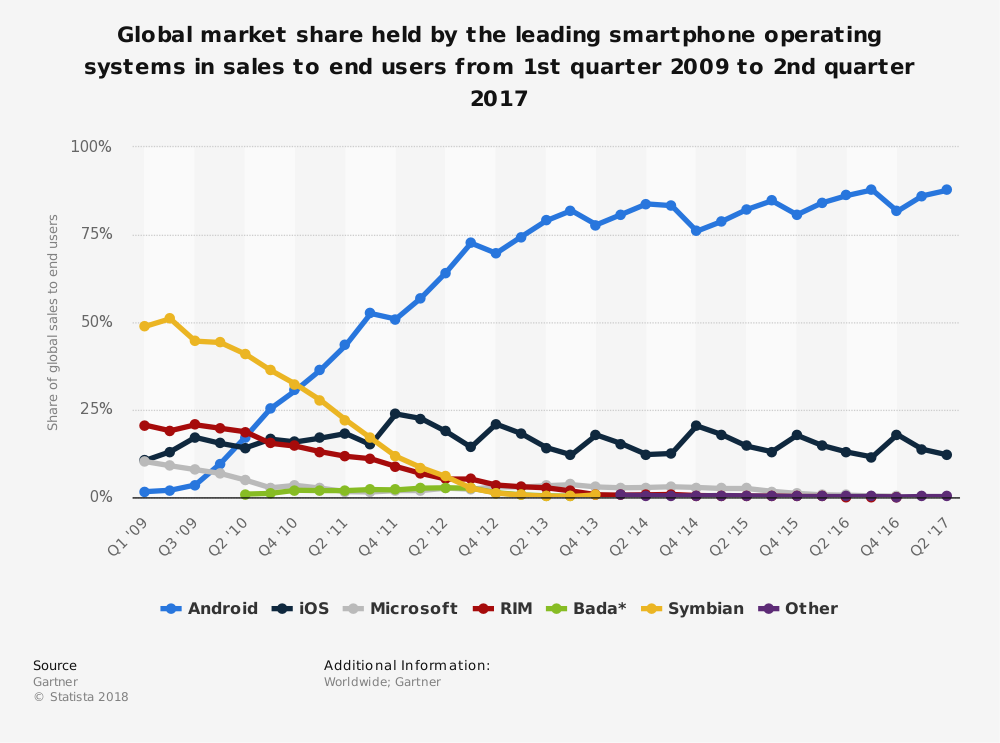This is the fifth post of the “Marketing an Open Source Project” series. I will discuss the success of Linux as a prominent example of Open Source Software (OSS). Highlighting Linux’s early achievements, its role in the Android operating system, and its dominance in the mobile and global operating system markets. The post also delves into the growth of corporate contributions to Linux and the unique branding and value it offers to contributing companies. It emphasizes the importance of marketing in OSS projects for building awareness and attracting “prosumers”. Additionally, it mentions the increasing preference for OSS in government agencies. If you haven’t read the first article, you can find it here.
Linux as a successful open-source software project
It can be argued that Linux is the most prominent of many examples of OSS. Linux was developed by Linus Torvalds in 1991, primarily driven by the “fun to program” motivation. Conversely, he declared that the success of Linux was due to the reputation and status that the developers gained from participating in the project [1].
Linux’s success is inarguable. In the early 90s, it enjoyed major commercial success and became a serious competitor to commercial operating systems such as Windows, especially in the server operating system market [2]. Moreover, considering that every Android device (phone or tablet) contains a Linux kernel [3], since the first quarter of 2011, Linux (Android operating system) has been the market leader of mobile operating systems worldwide [4].

As explained in the previous post, the main target market of community-driven OSS projects are contributors (developers, firms, etc.). The number of companies contributing to Linux increased from 200 in 1998 to 1500 in 2005 [5]. Proprietary companies (IBM, Intel, Oracle, Hewlett-Packard) have found a strategic potential in contributing to Linux to alter the competitive forces, to grow market share, to benefit financially or to undermine the competition by contributing “technology, marketing muscle, and thousands of professional programmers” [6].
Relevance of the topic
OSS branding offers unique benefits to contributing companies and is not driven by traditional sales incentives. This is because the companies behind OS brands “do not compete in the same way, do not produce their offerings in the same way, are frequently difficult to monitor, and are mostly not motivated by the same financial incentives as traditional branded sellers” [6].
Projects like Linux show that even though there are some barriers for OSS communities to do marketing, the benefits that marketing brings to a project cannot be ignored. Especially in terms of building awareness, attracting contributors, and expanding their reach. In an OSS project, communities are not marketing for sales purposes, they are building awareness for an exceptional piece of software.
Moreover, OS brands are becoming even more important, because an increasing number of government agencies and public administrations (typically the largest consumers of software) are establishing that OS must be a priority option. In some cases, a formal justification is required when opting for a commercial solution if an open-source one is available [7]. These considerations lead to the research question:
What are the reasons for the barriers in community-driven open-source software projects regarding marketing and how to remove them to build a brand strategy?
Applying the MECE principle, the following sub-questions must be answered:
- What are the existing limitations in software communities in terms of marketing?
- What are the risks of marketing an open-source project?
- Are there extra considerations that need to be addressed before marketing to protect the project from the identified risks?
Next week, I will provide a brief introduction to the research methodology employed to address these questions and present some findings.
References:
[1] Baytiyeh, H. & Pfaffman, J., 2010. Open source software: A community of altruists. Computers in
Human Behavior, Volume 26, p. 1345–1354
[2] Mockus, A. & Herbsleb, J. D., 2000. Two Case Studies of Open Source Software Development:
Apache and Mozilla. ACM Transactions on Software Engineering and Methodology, Volume 11, p.
263–272.
[3] Google Inc, 2017. Kernel | Android Open Source Project. s.l.:s.n.
[4] Statista, 2017. Global mobile OS market share in sales to end users from 1st quarter 2009 to 1st
quarter 2017. s.l.:s.n.
[5] Robles, G., Dueñas, S. & Gonzalez-Barahona, J. M., 2007. Corporate Involvement of Libre Software:
Study of Presence in Debian Code over Time. In: Open Source Development, Adoption and
Innovation. Boston(MA): Springer US, p. 121–132.
[6] Pitt, L. F. et al., 2006. The Penguin’s window: Corporate brands from an open-source perspective.
Journal of the Academy of Marketing Science, Volume 34, p. 115–127.
[7] Fitzgerald, B., 2006. The Transformation of Open Source Software. MIS Q., Volume 30, p. 587–598.

I am a systems engineer with a great passion for open source, software development, and technology in general. I have been part of the iDempiere community since 2012. I believe the enterprise world is one of the most aggressive environments out there. Companies tend to ruthlessly compete against each other. That is why seeing competitors co-exist and cooperate in harmony in iDempiere (and OSS communities in general) is so interesting to me.
